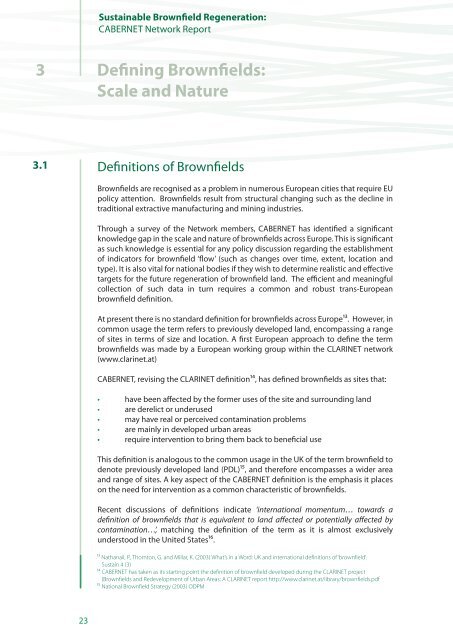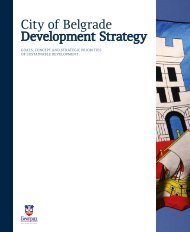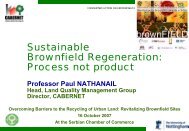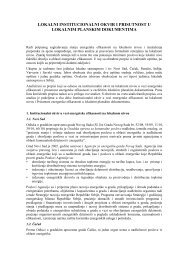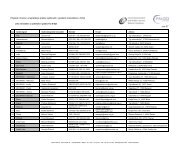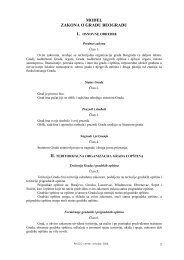Sustainable Brownfield Regeneration: CABERNET Network Report
Sustainable Brownfield Regeneration: CABERNET Network Report
Sustainable Brownfield Regeneration: CABERNET Network Report
Create successful ePaper yourself
Turn your PDF publications into a flip-book with our unique Google optimized e-Paper software.
<strong>Sustainable</strong> <strong>Brownfield</strong> <strong>Regeneration</strong>:<strong>CABERNET</strong> <strong>Network</strong> <strong>Report</strong>3Defining <strong>Brownfield</strong>s:Scale and Nature3.1Definitions of <strong>Brownfield</strong>s<strong>Brownfield</strong>s are recognised as a problem in numerous European cities that require EUpolicy attention. <strong>Brownfield</strong>s result from structural changing such as the decline intraditional extractive manufacturing and mining industries.Through a survey of the <strong>Network</strong> members, <strong>CABERNET</strong> has identified a significantknowledge gap in the scale and nature of brownfields across Europe. This is significantas such knowledge is essential for any policy discussion regarding the establishmentof indicators for brownfield ‘flow’ (such as changes over time, extent, location andtype). It is also vital for national bodies if they wish to determine realistic and effectivetargets for the future regeneration of brownfield land. The efficient and meaningfulcollection of such data in turn requires a common and robust trans-Europeanbrownfield definition.At present there is no standard definition for brownfields across Europe¹³. However, incommon usage the term refers to previously developed land, encompassing a rangeof sites in terms of size and location. A first European approach to define the termbrownfields was made by a European working group within the CLARINET network(www.clarinet.at)<strong>CABERNET</strong>, revising the CLARINET definition¹⁴, has defined brownfields as sites that:• have been affected by the former uses of the site and surrounding land• are derelict or underused• may have real or perceived contamination problems• are mainly in developed urban areas• require intervention to bring them back to beneficial useThis definition is analogous to the common usage in the UK of the term brownfield todenote previously developed land (PDL)¹⁵, and therefore encompasses a wider areaand range of sites. A key aspect of the <strong>CABERNET</strong> definition is the emphasis it placeson the need for intervention as a common characteristic of brownfields.Recent discussions of definitions indicate ‘international momentum… towards adefinition of brownfields that is equivalent to land affected or potentially affected bycontamination…’, matching the definition of the term as it is almost exclusivelyunderstood in the United States¹⁶.¹³ Nathanail, P., Thornton, G. and Millar, K. (2003) What’s in a Word: UK and international definitions of ‘brownfield’.Sustain 4 (3)¹⁴ <strong>CABERNET</strong> has taken as its starting point the definition of brownfield developed during the CLARINET project(<strong>Brownfield</strong>s and Redevelopment of Urban Areas: A CLARINET report http://www.clarinet.at/library/brownfields.pdf¹⁵ National <strong>Brownfield</strong> Strategy (2003) ODPM23


